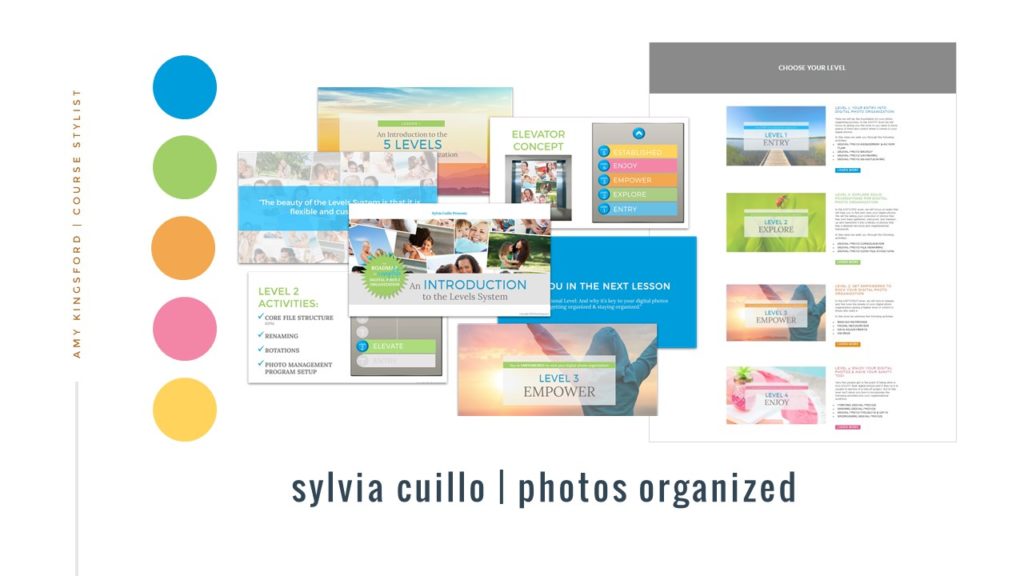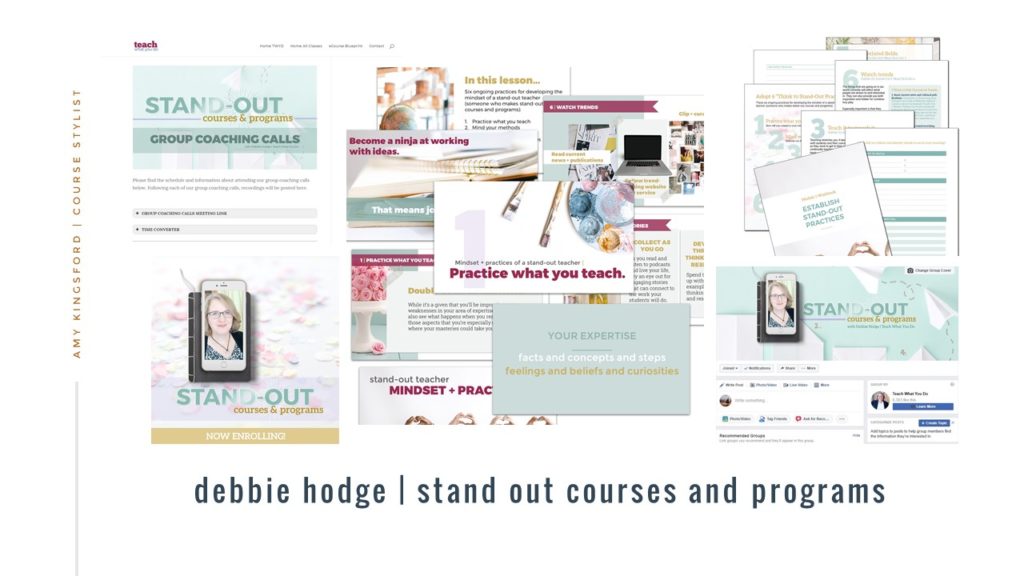When we think of the word STYLE, most of us are probably drawn to the concept of “personal style.” We see style as a way to convey our preferences or personality–a particular outfit that we think showcases our individuality–or maybe an artist or trend that appeals to us personally.
Fashion Designer Rachel Zoe said that “Style is a way to say who you are without having to speak.” Well, I’m curious to know what you think about that…?
. . . the idea of STYLE as a means of “visual communication.”
What if we were able to take this concept of style and move beyond ourselves, applying it instead to our online courses.
Can you start to see how style moves from being a way for us to simply make things look presentable and evolves into a useful tool for us as course creators to communicate with our students and add value to their experience?
That is what I want to talk to you about today…the possibilities that open up when you use style to communicate with your students on a deeper level.
What can I communicate to my students using style, you ask…?
As a course creator, a majority of your communication with your students will be done through your verbal and written lessons. However, there are a number of style elements that we have at our disposal including color, text, image, shape, line, texture and more–each of which have the ability to convey meaning, trigger emotions and affect mood and mindset.
This means that you have a unique opportunity to reinforce your direct communications with your students visually and instill feelings that are best communicated in a more subconscious way.
Let’s take a look at a few examples.
01 | Style can create comfort.
Style can go along way toward putting your students’ minds at ease, making them feel comfortable in their surroundings and instantly validating your students’ purchase decision.
A styled course also communicates that your students’ satisfaction is important to you.

Think for a minute about how you would make guests feel welcomed to your home…
It would probably start at the porch with that welcome mat and charming sign with your family’s name on it and it would continue inside with a comfortable place to sit in a clean and charmingly decorated living room that is always company-ready.
OK, maybe I’m reaching a bit here, but you get the point 😉
What if we used style in our online courses the same way we do in our homes…
…as a simple, yet effective way for us to roll out that welcome mat for our students and show them that they’re in the right place.

The styling for Annie Kirk’s Winter Sip of Sanctuary helped to transform the no-walls, tech-driven world of email and FB groups into an intimate and curated experience that could inspire “sippers” to take a few minutes each day for themselves.
02 | Style can inspire confidence.
Style can help you to establish an environment where your students feel confident and committed by taking your course from looking and feeling like a mish-mash of ideas and concepts to one that your students immediately recognize as a solid system for change and transformation.
Style can also inspire and reinforce the mindset that your students will need in order to be successful.
Your student may need to move through a series of mindsets that work to support them through your course and move them closer to where they need to be. The good news is that you can anticipate this and structure your styling from module to module and lesson to lesson to account for this.
Once you’ve figured out where you’re students are at and where you need them to be you can start using color, image and text as tools in your overall course styling to help you set the right tone and encourage the mindset that your students need to succeed.

In addition to speaking to her students’ more playful energetic side, the styling for Sylvia Cuillo’s course also provides a color-coded pathway through the chaos of tackling the organization of their photos.
03 | Style can provide a sense of clarity + consistency.
Style can help to improve your students’ ability to absorb and use the information that your course provides. By using basic style elements together you can label, organize and even just break up the information that you present in your course so that it is more manageable for your students.
And when you use these same established styling guidelines, again and again, you create a visual roadmap for your students, making the pathway to transformation much clearer for them.
This level of clarity and consistency can get your students into a good rhythm, where they know what to expect, and they can start diving more confidently into their work.

Debbie Hodge’s Stand Out Courses and Programs is the perfect example. Look at the visual congruity of each piece when we see them all together. It’s not hard to imagine how the students in her course could benefit from this level of consistency.
So we’ve covered three important ways that you can use STYLE to communicate with your students and help them to be successful in their transformation. And the truth is there are countless others, because STYLE is just that–a tool that allows you to communicate with your audience and add value to their experience.
Curious to know more about how you can use style to create a one-of-a-kind experience for your students?
CLICK HERE to learn more about my services.
